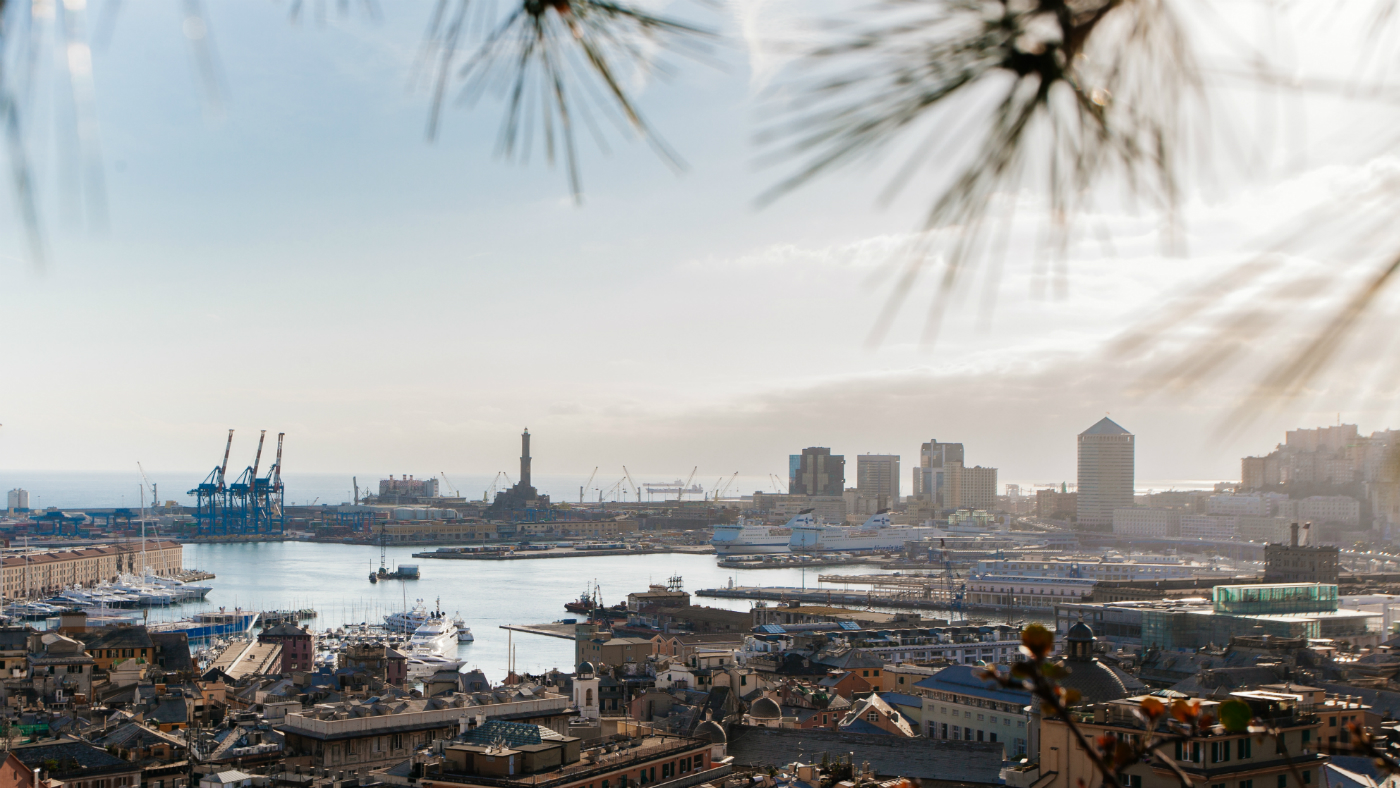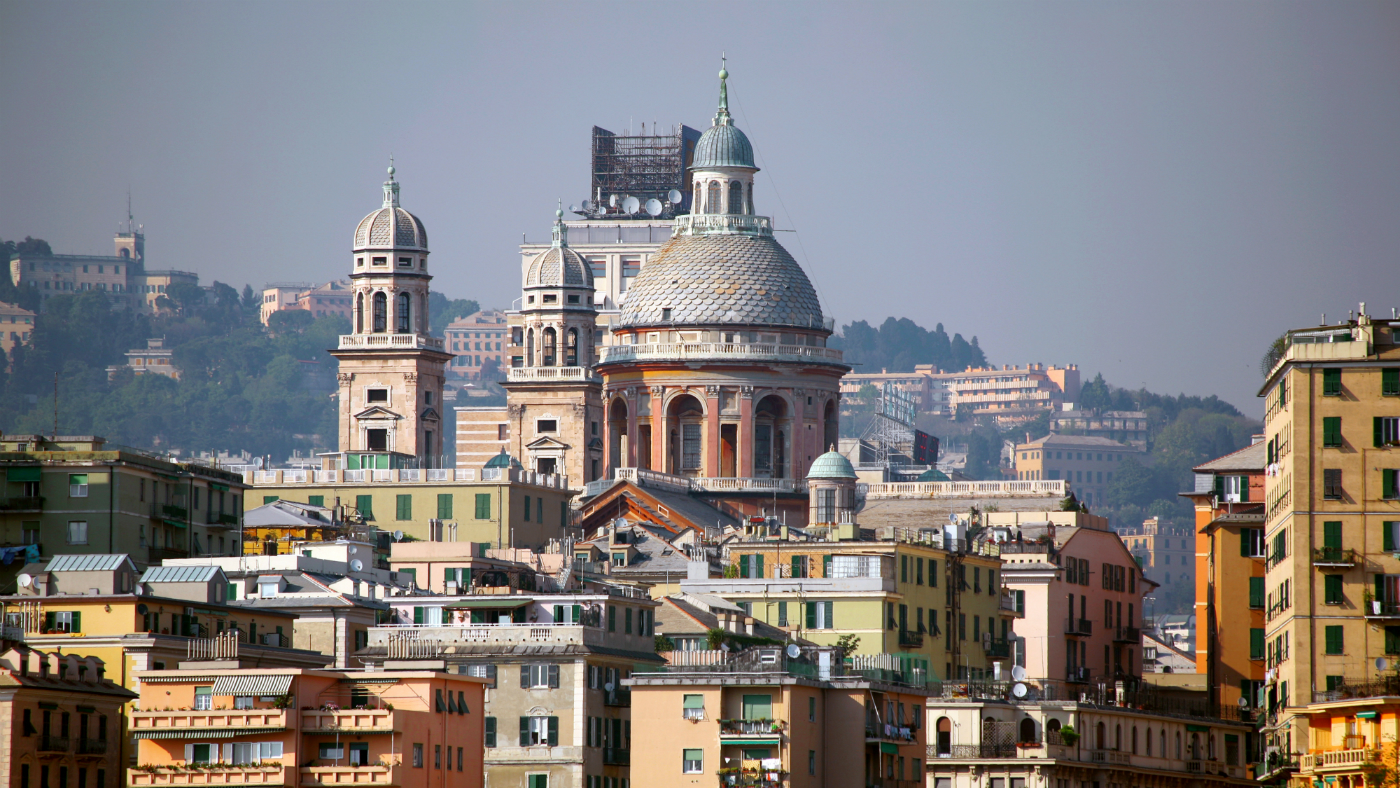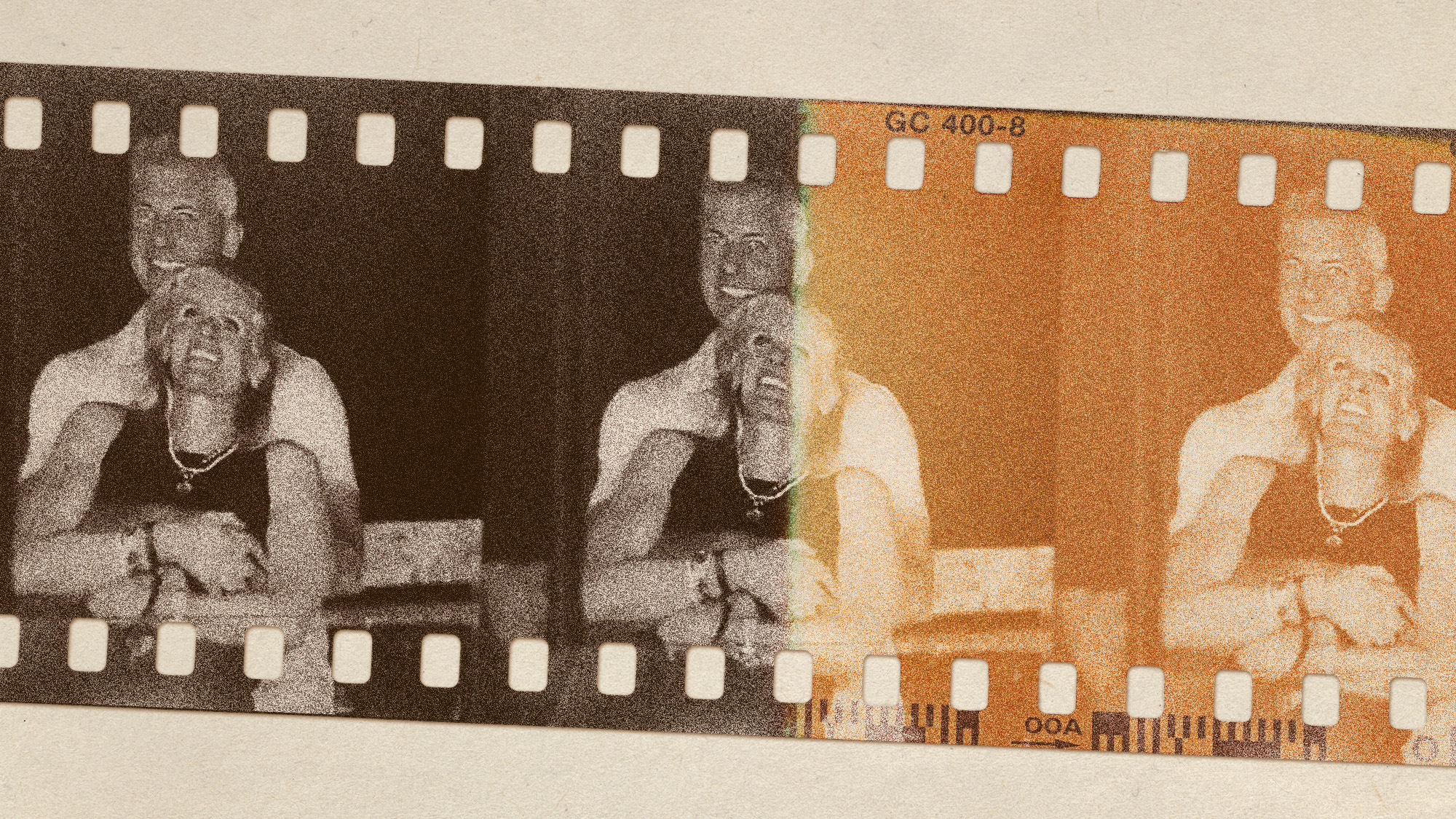Discovering Genoa: Italy’s quiet corner
Gorgeous food, fascinating history and few tourists make the Ligurian capital one of Italy’s most underrated cities

On 14 August of this year, during the heavy rain and high winds of a mid-summer storm, an 80-metre section of the Morandi viaduct, which carried the four-lane A10 motorway into the Italian port town of Genoa, buckled and collapsed. The roadway, and more than 30 cars on it, plunged 45 metres on to a mainly industrial neighbourhood in the west of the city, followed by a crumbling support tower. Forty-three people died.
While a period of mourning continues, punctuated by accusations, recriminations and inquests, residents of Genoa have had no choice but to continue with their daily lives. And, as a recent visit to the city made clear — a trip arranged before the Morandi tragedy, but taken about six weeks after it — getting on with daily life is what the Genovese do best.

While mass tourism has all but paralysed many other Italian cities, rendering the likes of Florence and Venice as static museum exhibits, Genoa is keen to present itself as a city that is very much alive. Vast container ships grind into and out of its main harbour, alongside the tiny boats that sustain the traditional fishing industry. Local shoppers still assemble in neat queues outside the centuries-old storefronts that line Genoa’s lanes. Peering from an upstairs window in a museum, even one of the Unesco-listed ancient palaces, might look directly into a family home where a housewife is folding laundry.
The Week
Escape your echo chamber. Get the facts behind the news, plus analysis from multiple perspectives.

Sign up for The Week's Free Newsletters
From our morning news briefing to a weekly Good News Newsletter, get the best of The Week delivered directly to your inbox.
From our morning news briefing to a weekly Good News Newsletter, get the best of The Week delivered directly to your inbox.
Meanwhile, the most popular gift for Genovese children on their fifth birthday is a motorcycle crash helmet, allowing them to hop on the back of one of the city’s 200,000-strong fleet of scooters, ferrying workers from their homes in the hills that peer over the city. While it’s reliably easy to step off of a cruise liner and hop on a Segway to explore the historical centre of Genoa — passing the first bank in the world, hearing the story of denim’s invention here, and how the British stole the George Cross flag from the city, among other yarns — visitors should take the opportunity to become immersed in the distinctively authentic Italian life.
That still means plenty of tremendous food, of course, and more than just a passing nod to centuries of unique history, but it’s possible too to explore and connect with the city as a local might.

The most bracing such experience our group encountered began on a blustery Monday morning at the quayside as we clambered aboard a two-man fishing boat, owned by the GE8317 co-operative. We quickly charted what began as a serene path through the busy harbour to the spot a few miles from the coast where the fishermen had laid their nets a couple of days before.
Although the 8am start time represented a concession to the preferences of some lightweight journalists (ordinarily most boats are coming in about then), the ocean was less forgiving. The mouthfuls of spray and tumbling waves made for a high degree of queasiness, even before the sea creatures, dead or dying, were winched aboard. We were not required to offer hands-on assistance, but neither was there any dressing this up: sea fishing for profit, even on a tiny boat like this one, is hazardous, cold, uncomfortable work. It has, however, sustained Genoa for many hundreds of years.
A free daily email with the biggest news stories of the day – and the best features from TheWeek.com
In common with others in the city, the owners of our boat combine their daily haul with that of similar fishermen to sell at market or to independent businesses, and fortunately this next stop along the chain was altogether more charming. We visited their restaurant, in the small village of Boccadasse, on the outskirts of the city, and the atmosphere here was much more serene.

A tiny pebbled beach is flanked by multicoloured houses and the terraces of restaurants and gelateria. Though it can apparently get crowded on weekends, it was agreeably sleepy on a sunny weekday lunchtime — except in the kitchen of the GE8317 restaurant, which transforms the morning’s catch into a some top-notch fare. Everything — from the mussels, to the fish ravioli, to the squid ragu and the fried fish in paper cones — is fresh and superb. Book well in advance as it’s a favourite with locals too.
Almost all food in Genoa is excellent, much of it deposited on plates within hours of being drawn from the sea, and the rest grown in conditions made tricky by the narrow plots of agricultural land, sandwiched between the Mediterranean and the Appenine mountain range. There are no vast hypermarkets in Genoa (there isn’t the space), which is a contributing factor to the continued promotion of its so-called “old world shops”.

An official register confers something like protected status on 39 such establishments, all of which are at least 100 years old, and still remain the property of an independent trader (likely a single family). They also still all sell the same product as they did when they opened, from premises that have barely changed. You can buy everything from ties to tripe; chocolate to corks; poultry to perfume. Even if you only want to browse, you might as well do so with a delicious foccacia in hand followed by the best gelato in Italy.
There are numerous ways to learn about the particular flavours of a Geovese kitchen, and how best to present them, at a variety of cooking schools in the city, including that run by the husband and wife team behind Creattivando. We received a primer in Ligurian cuisine before being talked through the preparation of a traditional cappon magro salad: a layered assembly of root vegetables and fish, typically the leftovers of a family meal given new life with the addition of zesty salsa verde. Our efforts didn’t have quite the same aesthetic appeal as our tutor’s, but they tasted just fine.

On another night we ate dinner in the upmarket Arena Albaro Village, which was originally built in 1935 as a swimming pool and leisure complex. These days, many of the buildings have been restored and repurposed as specialist restaurants and bars. Though the remaining tennis courts and pools retain a country-club vibe, the selection of street food stalls abutting high-end eateries turns the places into a metropolitan gastronomic hot-spot.
This architectural repurposing seems common in Genoa, often spurred by the city’s most famous contemporary resident: the architect Renzo Piano, who still works in the city and whose foundation occasionally has open days. While Piano might be best known internationally for the Shard in London or the Pompidou Centre in Paris, there are more Piano pieces per square kilometre in Genoa than anywhere else, and his work in his home town tends towards functionality.
Piano has designed five of the city’s eight underground stations as well as its aquarium, which occupies a large wharf in the Old Port area. The modern building is modelled after an ocean liner, complete with funnels and portholes, and from the outside has more in common with the unlovely industrial areas of the harbour-side. But inside, Piano’s genius for light and space offers the central attractions — the fish, seals and penguins (pinguini!) — superlative accommodation.

Even Piano’s most ostentatious creation in Genoa — the “bigo”, also in the Old Port — celebrates pragmatism, and speaks of an architect remarkably proud of his home. The bigo takes the form of a shipyard crane, lifting visitors 40 metres into the sky. It then offers a 360 degree panorama, over sea, harbour, wharf warehouses, roads, roofs and the mountains. Nothing is concealed; everything is presented as a rounded whole. (Piano has offered his services to help reconstruction of the Morandi viaduct. The local authorities remain in discussion over how best to both memorialise and proceed with rebuilding.)
So much of Genoa’s identity is tied to this geography. Italy’s sixth-largest city by population occupies less than 250 square kilometres but the residents have typically learned how to maximise their space. A series of municipal elevators and funiculars link the lower parts of the city to the exclusive hillside residence, and it’s well worth cramming into one of the elevators to take a look.

None is more magnificent than the neo-gothic Castello D’Albertis, built in the late 19th century by the eponymous explorer, and which now is a finely restored museum housing some of the art and curios he amassed during a career on the high seas. A statue of a young Christopher Columbus, who left his hometown of Genoa in the late 15th century to discover the New World, peers out from a terrace in the palace across the open sea. His smirking expression is that of an explorer refusing to be bound by the limits of knowledge.
Plenty more about Columbus, and Genoa’s long and richly interwoven relationship with the sea, can be discovered at the excellent Maritime Museum. One entire floor is given over to the story of migrants leaving the depression-era Genoa of the 19 th century, exploring the hardships they faced seeking a better life in the Americas. It is expertly curated and profoundly moving, especially in light of the new government’s unforgiving crackdown on migrants from warzones landing on Italian soil.
For more information: VisitGenoa.it
British Airways flights from London Gatwick to Genoa start from £28 each way
Rooms at Hotel Bristol start from €119/night
-
 The most anticipated movies of 2026
The most anticipated movies of 2026The Week Recommends If the trailers are anything to go by, film buffs are in for a treat
-
 The biggest viral moments of 2025
The biggest viral moments of 2025In the Spotlight From the Coldplay concert kiss cam to a celebrity space mission, these are some of the craziest, and most unexpected, things to happen this year
-
 Environment breakthroughs of 2025
Environment breakthroughs of 2025In Depth Progress was made this year on carbon dioxide tracking, food waste upcycling, sodium batteries, microplastic monitoring and green concrete
-
 Four Seasons Seoul: a fascinating blend of old and new in South Korea
Four Seasons Seoul: a fascinating blend of old and new in South KoreaThe Week Recommends Located right in the heart of the action, this classy hotel is the perfect base to explore the capital
-
 Upper House Hong Kong: a serene sanctuary in the bustle of the city
Upper House Hong Kong: a serene sanctuary in the bustle of the cityThe Week Recommends Panoramic harbour views and super-stylish interiors elevate this luxury hotel to another level
-
 Step into a fairy tale at San Ysidro Ranch
Step into a fairy tale at San Ysidro RanchThe Week Recommends This historic Californian hideaway is pure magic
-
 The Old Bell Hotel: whimsy and charm in historic Wiltshire
The Old Bell Hotel: whimsy and charm in historic WiltshireThe Week Recommends Giraffes, monkeys and bold, bright colours add a playful touch to this 800-year-old inn
-
 Grove of Narberth: comfort and style in the Welsh countryside
Grove of Narberth: comfort and style in the Welsh countrysideThe Week Recommends This boutique Georgian manor in Pembrokeshire is the perfect rural retreat
-
 The best adventure holidays for adrenaline junkies
The best adventure holidays for adrenaline junkiesThe Week Recommends Five destinations perfect for outdoor thrill-seekers
-
 The Peninsula: London’s first billion-pound hotel
The Peninsula: London’s first billion-pound hotelThe Week Recommends As the capital’s super-luxury hotel scene continues to expand, the respected brand is still setting the standard
-
 The Mini-Mayfair package at Mandarin Oriental
The Mini-Mayfair package at Mandarin OrientalThe Week Recommends Keep the kids entertained with a family-friendly stay at one of London’s swankiest hotels